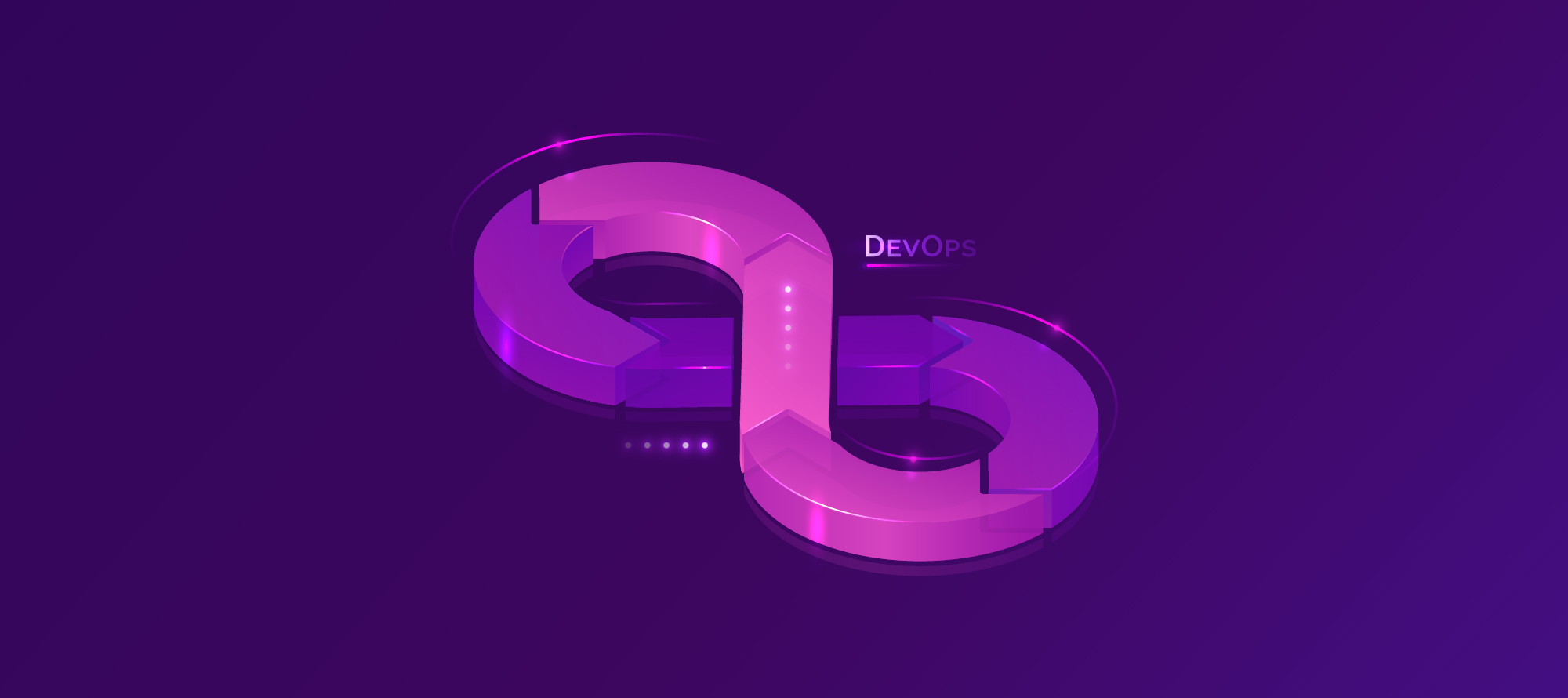What is The Role of Microservices in DevOps: Better Together

Share This Article
Table of Contents
Subscribe to Our Blog
We're committed to your privacy. SayOne uses the information you provide to us to contact you about our relevant content, products, and services. check out our privacy policy.
Enterprises that want to be successful have to be ready for digital transformation. Two buzzwords in this connection today are microservices and DevOps. Whereas the former refers to the software architectural style, the latter refers to the practices designed to offer greater operational efficiency and agility for the enterprise.
It is interesting to note that microservices are the result of a set of DevOps practices in companies such as Netflix, Amazon, Google, and others. These companies started with monolithic software systems which they later changed to loosely coupled microservices when their businesses became too large to manage.
Download our ebook: Porting from Monolith to Microservices: is the shift worth it?
Well, the evolution of these two concepts did not culminate in the development of loosely coupled services alone. Organizations that adopted DevOps had many other similarities too. They had common approaches as far as their organizational structure was concerned, common software development approaches, preferred a cloud-based infrastructure, and also an affinity for automation.
With this background, you can easily understand that combining microservices and DevOps can foster continuous integration (CI), which can help the organization deliver faster software releases, bringing about quicker production cycles.
Learn About DevOps Basics
DevOps is a set of practices and processes that aim to reduce the time it takes to deliver software to its users. It involves a combination of software development, operations, and quality assurance (QA) processes. DevOps emphasizes communication and collaboration between developers, operations, and QA teams, and promotes frequent software releases and feedback loops. DevOps also promotes the use of automation and monitoring to ensure that software is deployed reliably and quickly.
How Microservices fit into DevOps
Microservices are an important part of DevOps because they allow for faster, more efficient development and deployment of applications. Microservices are designed to be loosely coupled, meaning they are independently deployable and can be updated or modified separately from each other. This allows development teams to focus on their specific tasks and make changes quickly, without having to worry about the entire system. The result is faster, more reliable deployments and a better user experience. Additionally, microservices are designed to be highly scalable, so they can handle increased load without difficulty. This makes them an ideal choice for companies looking to implement DevOps.
Checkout DevOps Metrics: 6 Critical Indicators of Performance in 2023
Combining Microservices and DevOps – How they Create Change Together
For those in the DevOps field, the following are the benefits that combining microservices is likely to bring about.
Deployability
Newer versions of a service can be rolled out more quickly than before. This is due to the shortening of the build, test, and deploy cycles. In addition, microservices also allow incorporation of employing service-specific configurations for security, monitoring, and replication.
Read our blog : How to find the best microservices development company
Reliability of the service
If a microservice develops a fault, only that service and the consumers of that service are affected.
Availability of a service
The release of a newer version of a service takes very little time. The downtime is very little when compared to releasing a newer version of a monolithic application.
Scalability
Any and each of the microservices can be scaled independently by using grids, pools, and clusters. This makes microservices a perfect fit for utilizing cloud services.
Modifiability
Each service is flexible and can be modified using any of the latest technology frameworks according to what suits the service best. They can use libraries and data sources of their choice.
Management
Microservices leverage the agile methodology as application development is divided among many smaller teams that work independently.
Read our blog : What Kind of Challenges Can Microservices Help You Overcome
DevOps gains additional productivity when microservices are combined by embracing common toolsets that can be used during development as well as operations. This serves to establish a common terminology and processes for dependencies, requirements, and problems. Therefore, all of these make it easier for Dev and Ops to function together on a problem and fix a configuration or script for the build. This makes microservices and DevOps work better together.
The Significance of Combining both Microservices and DevOps
Modern applications and microservices go well together. Changing to the microservices architecture helps organizations to improve their productivity and also deliver solutions quickly to those that need scalable and flexible solutions. Loosely coupled microservices communicate only via RESTful APIs. This modularity helps to accelerate software delivery, which suits DevOps just fine. It is best to say that the microservices architecture can be described as a natural progression of DevOps.
Fast Deployment
As each of the microservices runs autonomously with a separate database management, the different microservices teams do not have to wait until the entire application is completed and ready to be deployed. In short, the delivery pipeline is speeded up in the case of microservices.
Contact us today for first-quality digital transformation services!
Want to know whether your decision to port from a monolithic application to microservices is worth the hassles? Download and read our eBook titled, "Shifting from Monoliths to Microservices – Is the shift worth it?"
Increased Reliability
In the microservices architecture, both the functions of the services and the errors associated with them are delineated. By removing single points of failure, the issues that arise in one service do not affect the other parts of the application. This type of architecture also enables the team to extend the functionality of a specific service with minimal downtime. This means a high level of availability of the system.
Checkout DevOps Project Management: What is the Role & How to Move Pipelines Forward
Code Reusability and Scalability

As microservices are essentially made up of loosely coupled services, it is possible to loosen functions from the application and thereafter reuse their code for another service. Individual microservices can be scaled independently, as mentioned earlier, by using Docker containers. This helps to manage erratic loads without impacting other services. This factor makes microservices the most suited for cloud-type functioning.
Autonomous Teams
As a large and complex application is fragmented into many smaller independent services in the microservices type of architecture, it is possible to allocate each service to a team that will function autonomously. This makes the team function with a single-minded focus, thereby making for higher productivity.
Read our blog : Why Business leaders should care about Microservices
The teams are also at liberty to choose the technology that suits the business functions best. Likewise, the tools and processes for each of the services may also differ. The team is entirely responsible for the service allocated to them and this enables them to function autonomously.
Higher Precision and Quality

The well-defined goals that come out of being in an autonomous team, completely responsible for a service, bring out higher quality pieces of code with improved precision in a shorter period of time. The microservices and DevOps combination therefore results in end-to-end testing automation and delivery. This also allows for quick fault isolation and resolution of faults while keeping the rest of the system functional.
Frequent and Incremental Releases
DevOps initiatives include frequent and incremental releases aligned with the foundational principle of implementing, measuring, and improving. This is in great alignment with microservices, where their independent services can be tested, modified, and released quickly. External dependencies are reduced to a minimum, thereby facilitating frequent releases.
Read our blog : Should you migrate from monolith to microservices architecture
Microservices and DevOps: The Case of Amazon in Point

Amazon, during its initial years, functioned out of a monolithic application. The application consisted of tightly coupled components. Major code changes were stuck in the pipeline for months and weeks and changes could not be deployed fast enough. This proved to be a hassle as the business was growing at a fast pace.
This was the point when Amazon broke its application into small parts or independent services. This clean-up operation proved to be a game changer for Amazon. This change speeded up the application delivery and helped the corporation improve DevOps.
Read our blog : Advantages of Microservices Architecture, Disadvantages of Microservices Architecture
Whereas DevOps improves the operations side of the organization and the culture thereof, microservices help to build and maintain applications faster and easier.
Why Choose SayOne
At SayOne, we build microservices systems with pronounced agility, thanks to our mature DevOps culture. We lend a helping hand to start-ups, SMBs, and enterprise-level organizations to overhaul their monolithic applications into microservices that are independent, dexterous, and resilient. We also build API platforms to deliver the required amount of security, reliability, visibility, and monitoring purposes.
Conclusion
Microservices can be considered close to a shift in paradigm instead of just being an architectural design. Analysts predict that the microservices and DevOps combined ecosystem market is slated to grow at a rate of 16% between 2019 and 2024 and will reach USD 10B by 2023.
Download our ebook: Porting from Monolith to Microservices: is the shift worth it?
ndustry experts believe that companies that leverage the combination of microservices and DevOps will enjoy a competitive edge in the market. Do we need to say more?
Are you looking to outsource your microservices project? Give us a call today!
Share This Article
FAQs
The purpose of microservices is to enable the development of complex distributed applications. Microservices are small, self-contained applications that are designed to work together to complete a task. Each microservice focuses on a single, well-defined purpose and communicates with other services through an API. This allows developers to quickly build, maintain, and scale applications without having to completely rewrite existing code. Microservices also make it easier to deploy applications in different environments, such as on-premise, cloud, or hybrid, without having to make major changes. Furthermore, microservices can increase the reliability of the application, as they are isolated and can be restarted independently of other services if they become unresponsive.
Yes, microservices are highly beneficial for DevOps. As microservices are designed to be loosely coupled and independently deployable, they are well suited for DevOps practices. This allows different teams to work on different services without affecting the entire system, resulting in faster development cycles and improved scalability. Microservices also enable more frequent deployments and faster time-to-market for features, as they can be independently tested and deployed. Additionally, microservices can be easily monitored, making it easy to identify and fix problems quickly. This contributes to a higher quality of service and improved customer satisfaction.
No, DevOps is not required for microservices. While DevOps can be beneficial when working with microservices, it is not a requirement. DevOps is a set of practices and tools that enable organizations to accelerate the delivery of applications and services. It enables the automation and integration of development, testing, security, and operations activities. DevOps practices can help to ensure that microservices are deployed quickly, securely, and with high quality. However, it is not necessary for microservices development, as there are other approaches that can be taken.
Subscribe to Our Blog
We're committed to your privacy. SayOne uses the information you provide to us to contact you about our relevant content, products, and services. check out our privacy policy.




